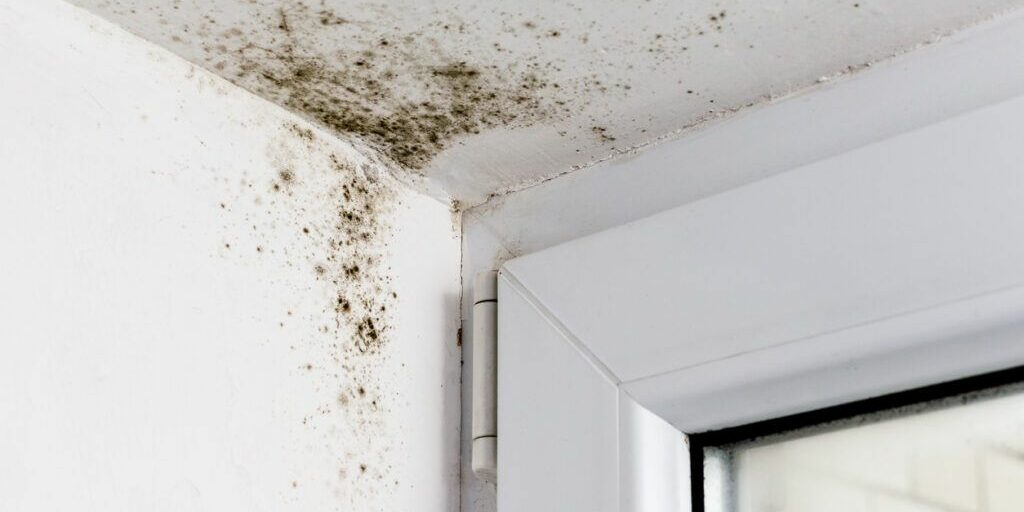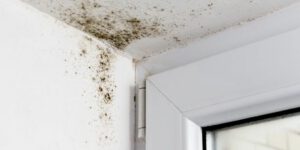How to Deal with a Leaking Roof

Your roof is a major part of your home, and leaking there can cause significant damage to your house. It can also lead to mold and mildew issues, which could be harmful to your health.

Leaking water is especially bad for rafters and ceiling joists, which can become damaged over time. This can lead to costly wood framing repairs.
When your roof leaks, water enters through small holes in the shingles and penetrates into your home’s structure. As a result, your walls and ceilings may show signs of damage, like dark spots and bulges.
Typically, these darker stains on your walls or ceilings start out as tiny blemishes in the drywall or ceiling sheetrock. Over time, they grow darker and eventually form a creepy outline of the building’s framing on the wall or ceiling surface.
These staining patterns, commonly referred to as ghosting or thermal tracking stains, indicate that the underlying drywall or ceiling sheetrock is not insulated properly and that cold winter air, in conjunction with condensation, has penetrated into the building’s interior walls or ceilings.
In addition, the dark stains you see may be due to corrosion on fasteners that hold the drywall to the wall or ceiling framing. The quickest way to detect this is to look closely at the drywall screws and nails for signs of corrosion.
The next step is to check your attic for insulation defects that are allowing cold air to enter the building’s walls and ceilings. Adding more insulation to these areas will prevent the emergence of ghosting or thermal tracking and the associated dark stains on your walls or ceilings.
If you notice these dripping spots in your walls or ceiling, get your local roofing professional to take a look. This is especially important if your leaking roof is the source of the problem.
As the dripping spots in your home accumulate, they will eventually lead to mold growth. This is an important thing to note because mold can be a serious problem in your home and can lead to costly repairs if left untreated. If you have a roof leak, it is also a good idea to replace the shingles that are damaged or deteriorating because they will become vulnerable to moisture penetration and allow water to enter your home’s walls and ceilings.
If water leaks from your roof, you may start to see sagging bulges hanging from your ceiling. These can be a sign that the water leak has not been properly addressed and may result in more serious damage to your home. If you find a sagging area in your ceiling, grab a bucket or other large leak-proof container and place it under the bulge to catch water as it drips.
A sagging ceiling can be caused by several things, including incorrectly sized drywall or improper construction. A sagging ceiling can also be caused by seasonal temperature changes in your building’s structure. As the weather warms and cools, your foundation or frame can move, causing movement in materials that are attached to the structure, including your drywall.
You can stop a sagging ceiling from getting worse by having your house inspected by a professional who will look for any weak spots where cracking or sagging may occur and repair them without hassle. They can identify and fix these problems before they get any worse, so your home is safer and less expensive to maintain.
Sagging ceilings can also be caused by termites or white ants. These pests destroy load-bearing timber structures and are a serious threat to your home. The ants can chew through the material of a sagging ceiling, causing it to sag or collapse, which could lead to further structural damage.
In most cases, a sagging ceiling is caused by a leak. Leaking plumbing pipes, roof leaks, and other water-related issues can cause a section of your ceiling to bulge or droop, which may not be visible until the water has started to erode away the drywall and plaster.
It’s important to resolve your leak as quickly as possible, as a leaking ceiling can damage the rest of your home. The more damage that your sagging ceiling incurs, the harder it will be to repair and the higher your insurance premiums will be.
Sagging ceilings can be caused by a variety of factors, including water leaks, improper drywall installation, or the original builder’s mistakes. If your sagging ceiling is the result of improperly installed drywall, it’s best to replace it with 5/8-inch drywall or add furring strips to the joists underneath it. This will allow the drywall to hang over the joists with more strength, and it will not sag as easily.
